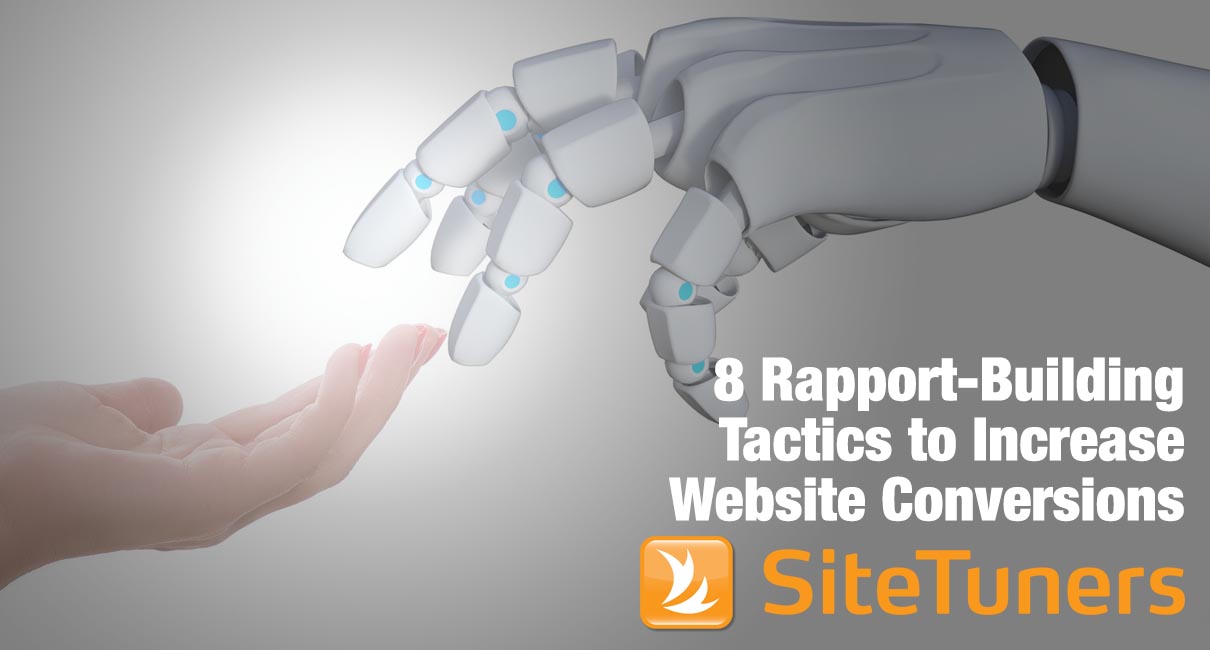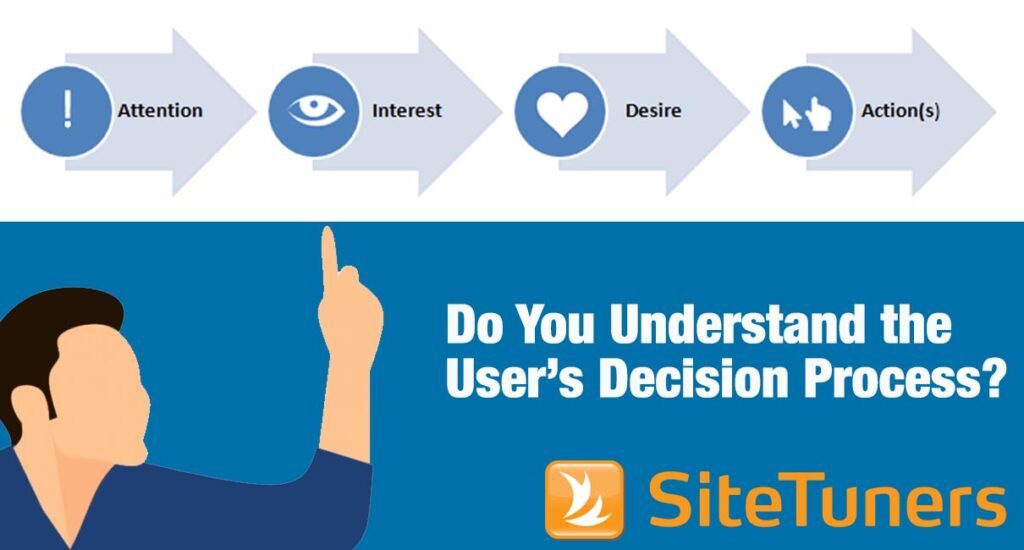
Rapport is defined as a close and harmonious relationship in which the people concerned understand each other’s feelings or ideas and communicate well. In one-to-one sales situations, techniques such as discussing common interests, maintaining eye contact, and mirroring all can be used to build rapport. But how can you leverage these rapport-building methods when your sale is made mostly, or entirely, online?
Creating rapport with potential customers through your website is certainly more challenging than doing it face to face, or even on the phone. But it is possible. Here are eight ways you can translate traditional rapport-building methods to the online environment.
Commonality
In a traditional sales environment, the salesperson can build a sense of camaraderie and trust with the buyer by finding things they have in common – shared interests, dislikes, challenges, that sort of thing. To build commonality with your online buyers, consider these tactics:
-
- Use photography that is genuine and will remind your audience of themselves or things that are important to them. Steer clear of impersonal stock photos as much as you can. You might even consider incorporating images of your staff so that people feel like they have more of a personal connection to you.
-
- Post reviews written by your satisfied customers – especially those that demonstrate how your company helped to solve a specific problem. Your audience will be able to find the commonality with their own challenges and better envision how you might help them.
-
- Show a little personality. People want to do business with people – not a company. You can show the human side of your company is subtle ways, like using the term “we” in your text (instead of using the third person), leveraging your “about us” section to really show the people behind the company, and showing you care by offering guarantees and excellent customer service.
Mirroring
Mirroring is a way of getting into a rhythm with a person on as many levels as possible. Salespeople use emotional mirroring by empathizing with a buyer’s emotional state, being good listeners, and repeating back to the buyer key words and phrases that he or she uses. Other types of mirroring include tone and tempo mirroring (matching the tone, tempo, and inflection of a person’s voice) and posture mirroring (matching the general “energy level” of the buyer). To translate these techniques to your website, you need to be able to anticipate the emotions, voice, and energy of your visitors before they even arrive at your site, and then give them an experience that feels like mirroring.
Develop your site around personas and user scenarios. User scenarios are anticipated paths a specific group of users will likely follow in order to complete a given task on your site. Combining personas and user scenarios really helps you understand the needs, concerns, and general mindset of your visitors so that you can provide them an experience that matches their emotional state. Imagine you’re a jeweler selling engagement rings. The future bride and groom both may visit your site, but with very different emotions and concerns. He will be concerned about budget and quality, and will probably have a lot of anxiety about selecting the right ring without putting himself in lifelong debt. She, on the other hand, will be looking for the ring she’s been dreaming of for years. She’ll want to see lots of pictures so she can visualize wearing the ring and showing it off to friends and family. She may not even look at the prices.
Write your headlines and copy using the same language your audience would use. You may not be able to mirror vocal inflections online, but you can certainly use terminology and a sentence structure that matches how your buyers would speak. Listen in on some sales calls and take note of how customers define their problems – what words they use, what their hot-button issues are, etc. Then use that insight to write copy that speaks directly to those issues by incorporating the same keywords and adjectives that buyers themselves use.
Make sure your website design reflects the level of professionalism your buyer would expect, and use colors that will be in sync with your buyers’ preferences. A software company can get away with using lime green or bright orange, but a hospital website might not be as successful with those hues. The point is, you don’t want your design to shock or surprise your visitors. You want it to mirror their needs and expectations.
Reciprocity
Did you know that giving gifts or doing things without expecting anything in return can trigger feelings of obligation? This is not the same as giving a customer a free demo of a product, because any customer using a demo would surely understand that there is a hope and expectation that they might later buy. But there are plenty of other ways you can leverage the power of reciprocity on your website.
-
- Provide a content-rich blog that freely gives the same sort of advice or information you might give a customer or friend. Make it useful and meaningful so that people want to come back frequently for more information. Once you have them hooked, they’ll be more likely to come to you when they’re in the market to buy.
-
- Offer guides and videos that help solve your customers’ problems. For example, if you sell cellphones you might have a video series on how to set up your new device – offering a different version for each device. A financial institution might offer a free loan calculator wizard or a B2B service provider might offer downloadable case studies or a free webinar.
Better Rapport = Quicker Sales
Whether your website is directed to consumers or other businesses, building rapport with your visitors is essential to increasing conversions. Every element of your site, from its design and copy to photos and fonts, will either help or hinder your effort to build rapport. And remember – rapport is subtle. Visitors may not be aware that they have built a rapport with you, but they will definitely know if they didn’t.
This article originally appeared in Tim’s ClickZ column February 18, 2014
Work with the best!Kickstart your optimization with a 90-minute Website Review from the pioneers in conversion rate optimization. Our CRO experts at SiteTuners can help diagnose your website from a conversion and usability perspective. |


